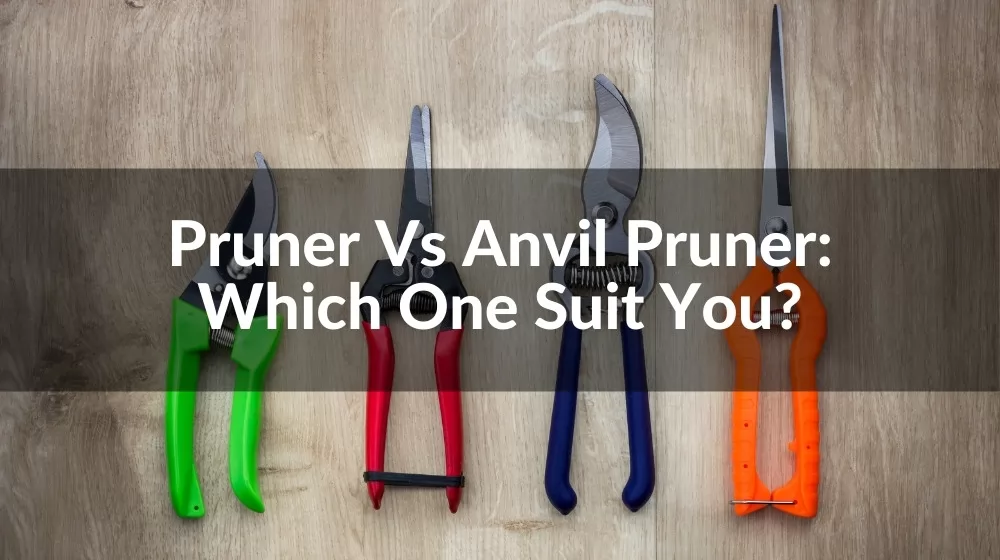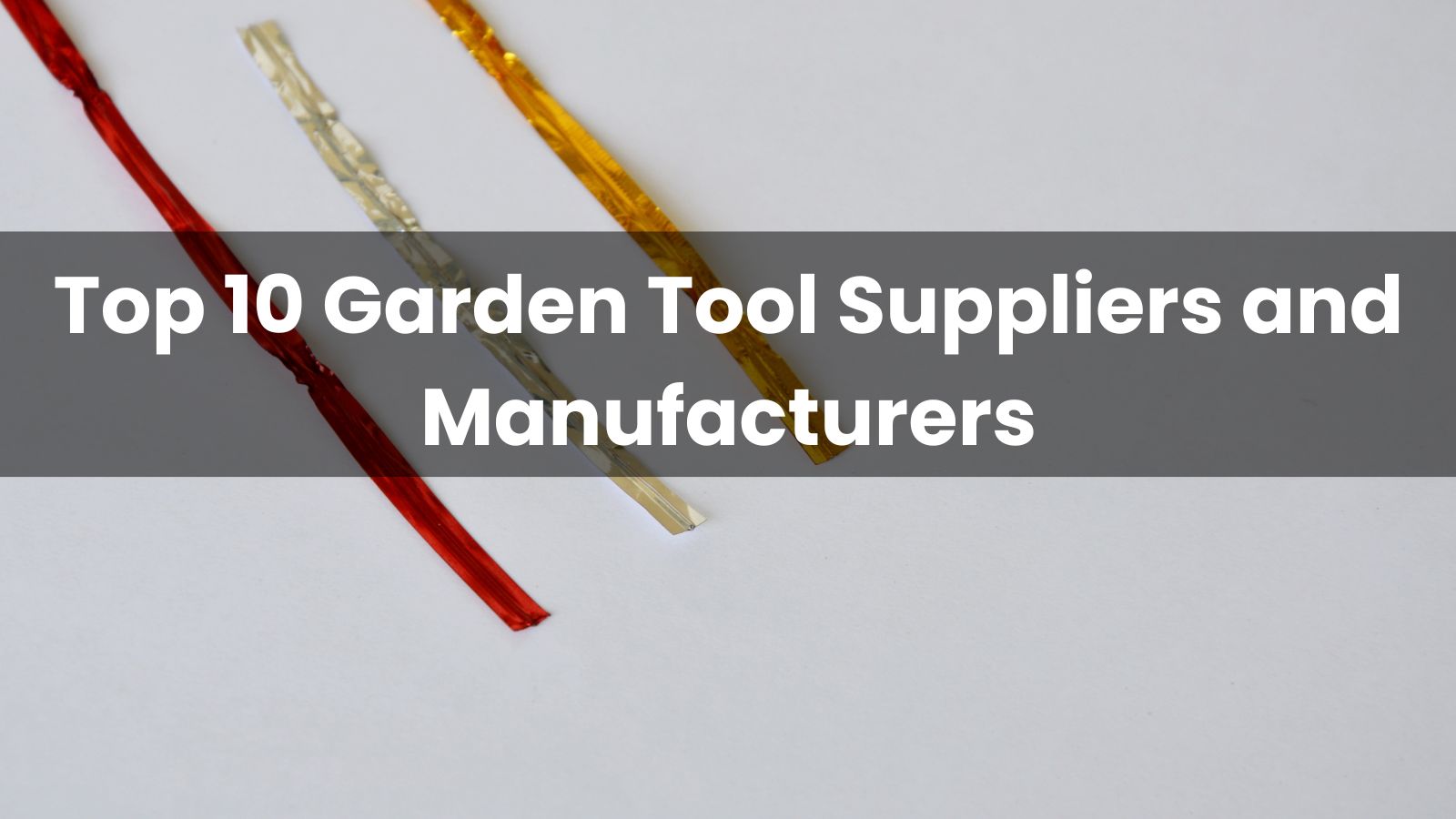
Welcome to the ultimate guide on the essential gardening tools: Bypass and Anvil Pruners. Whether you're a gardening enthusiast or a professional landscaper, understanding the nuances of these tools is crucial. In this comprehensive article, we delve into the world of pruning tools, comparing and contrasting the functionalities and benefits of Bypass Pruners and Anvil Pruners. Get ready to discover the perfect tool for your gardening needs, ensuring your green space is not just maintained but thrives.
When it comes to maintaining a vibrant and healthy garden, the significance of pruning tools cannot be overstated. Pruning, the act of cutting away dead or overgrown branches or stems, is essential for promoting plant health, shaping plant growth, and enhancing the overall aesthetic of your green space. Among the myriad of tools available for this task, pruners and anvil pruners stand out as popular choices for gardeners and landscaping professionals alike.
But what exactly makes these tools distinct? At a glance, both pruners and anvil pruners might seem similar, but they are designed for different types of pruning tasks. Pruners, often referred to as bypass pruners, function like scissors. They have two blades that pass by each other, making them ideal for cutting softer, live stems and branches. This type of cut is clean and promotes quick healing of the plant tissue.
On the other hand, anvil pruners feature a single straight blade that closes against a flat edge or 'anvil.' This design is more suited for cutting through dry, dead wood or thicker, woody stems. The action of the anvil pruner is more of a crushing motion, which makes it easier to cut through tough material but might cause damage to live stems or delicate plants.
Understanding the basic mechanics and applications of these pruning tools is crucial for anyone looking to maintain a garden or engage in landscaping. Choosing the right tool for the job not only makes the task more efficient but also helps ensure the health and beauty of your plants. In the following sections, we will delve deeper into the specifics of each type of pruner, helping you make an informed decision for your gardening needs.
Selecting the appropriate pruning tool is not just a matter of convenience; it's a vital decision impacting the health and appearance of your plants. The use of the right pruning tool can be the difference between a flourishing garden and one that struggles to survive. Understanding this importance is crucial, especially when deciding between tools like pruners and anvil pruners.
The right tool does more than just make clean cuts; it also preserves the integrity of your plants. A clean cut made by a sharp pruner heals faster and reduces the risk of disease and pest infestation. Conversely, using an inappropriate tool, such as an anvil pruner on tender stems, can crush and damage the plant tissue, leading to a slower healing process and potentially exposing the plant to various ailments.
Additionally, the ergonomic design of the right pruning tool reduces the physical strain on the user. This aspect is particularly significant for professional landscapers and gardeners who spend hours tending to plants. An optimally designed tool reduces fatigue and increases efficiency, allowing for longer work periods with minimal discomfort.
For businesses and professionals in the landscaping and gardening industry, the choice of tools also reflects their commitment to quality and efficiency. Using the appropriate tools not only streamlines the workflow but also showcases a high level of professionalism and care for plant health. Thus, investing in the right pruning tools, such as pruners or anvil pruners, tailored to specific tasks, is not just a practical decision but also a strategic business choice.
In the next section, we will explore the specific characteristics of pruners and anvil pruners, providing insights into which scenarios each is best suited for, ensuring you make the most informed decision for your pruning needs.
Bypass pruners, often the go-to choice for gardeners and landscapers, are renowned for their precision and gentle cutting action. Resembling a pair of scissors, these pruners consist of two curved blades that slide past each other, delivering a clean and precise cut. This design makes them particularly effective for cutting through live, green stems and branches without causing unnecessary damage to the plant.
The design of bypass pruners centers around two key components: a sharp curved cutting blade and a non-cutting curved hook. The cutting blade slices through the plant material while the hook holds the branch in place, ensuring a clean and precise cut. This mechanism minimizes the crushing or bruising of the plant tissue, promoting healthier growth and quicker healing.
Bypass pruners are ideal for a range of gardening tasks, particularly for pruning live plants. Their precise cutting action makes them perfect for shaping bushes, snipping herbs, deadheading flowers, and pruning small to medium-sized branches. Their ability to make clean cuts is crucial for maintaining plant health and aesthetics.
The advantages of using bypass pruners include their ability to make precise cuts with minimal damage to the plant. They are also ergonomically designed, making them comfortable to use for extended periods. Furthermore, their versatility makes them suitable for a wide range of plants, from delicate flowers to somewhat tougher green stems.
However, bypass pruners do have their limitations. They are not ideal for cutting dry, dead wood or very thick branches, as this can blunt the blades or cause the pruners to jam. For such tasks, other tools like anvil pruners might be more suitable. Additionally, they require regular maintenance, including sharpening and cleaning, to keep them functioning effectively.
Anvil pruners are a robust tool in the gardener's arsenal, designed specifically for cutting through tough, woody stems and dead branches. Unlike bypass pruners, anvil pruners consist of a single straight blade that comes down on a flat surface, known as the anvil. This mechanism makes them particularly effective for tasks where brute force and a strong cutting action are required.
The key to an anvil pruner's design is its single sharp blade working in conjunction with a sturdy, flat anvil. When the handles are squeezed, the blade presses the plant material against the anvil, effectively cutting it. This design allows for a powerful cutting force, but it also means that the cut is more of a crushing action, making it less suitable for delicate or live plants.
Anvil pruners are ideal for cutting through hard, dry wood or dead material. They are particularly useful in preparing plants for winter, removing dead branches, or cutting back old growth. Their design makes them less likely to jam when cutting through tough material, and they can handle thicker branches than bypass pruners.
The primary advantage of anvil pruners is their strength and ability to make cuts that would be difficult for bypass pruners. They are durable, often lasting longer when used on the appropriate materials, and can handle more substantial pruning tasks. For gardeners dealing with lots of dead wood or tough plants, anvil pruners can be an invaluable tool.
However, anvil pruners are not without their limitations. Their crushing action can damage live plant tissue, making them unsuitable for pruning delicate stems and live plants. Additionally, their bulkier design can be less ergonomic and more tiring to use over long periods, particularly for precision tasks that require more finesse than force.
The fundamental difference between bypass and anvil pruners lies in their cutting mechanisms. Bypass pruners use a scissor-like action, where two curved blades pass by each other to make a clean cut. This design is gentle on the plant and ideal for live, green stems. Anvil pruners, with their single blade striking against a flat surface, excel in cutting through dead or woody material, employing a more crushing motion.
Both bypass and anvil pruners often use high-quality steel for their blades, ensuring sharpness and durability. However, the blade shapes and sharpening angles vary to suit their specific cutting actions. Bypass pruners typically have sharper, finer blades for precision cutting, while anvil pruners have thicker, more robust blades designed for power cutting.
Ergonomics play a crucial role in the design of both pruners. Bypass pruners often feature more streamlined handles, suitable for detailed work and prolonged use. Anvil pruners, on the other hand, may have bulkier handles to provide the extra leverage needed for cutting through tough materials. Both types come in various handle materials and designs, catering to different hand sizes and comfort preferences.
Durability is key for both bypass and anvil pruners, but their maintenance needs differ. Bypass pruners require regular cleaning and sharpening to maintain their precision cutting edge. Anvil pruners, while generally more robust when dealing with hard materials, also need periodic maintenance to ensure the blade remains effective and the anvil doesn't wear down. Proper care and storage are essential for both types to prolong their lifespan and ensure optimal performance.
Choosing the right pruners is essential for both efficiency and plant health. When buying pruners, consider the type of plants you'll be working with. For delicate live plants, bypass pruners are preferable, while for tough, woody stems, anvil pruners are more suitable. Additionally, take into account the size of your hands and the pruner’s grip to ensure comfort during use. The quality of the blade material and the overall build of the pruner also play a crucial role in determining its longevity and effectiveness.
Pruners are available in a wide range of prices, and often, you get what you pay for. While it may be tempting to opt for cheaper models, investing in a higher-quality pruner can save money in the long run through durability and reduced maintenance needs. However, it’s important to balance quality with budget. Look for pruners that offer the best combination of features, durability, and performance within your price range.
A good warranty can be a sign of a manufacturer's confidence in their product. Look for pruners that come with a solid warranty, as this can provide peace of mind and protection against manufacturing defects. Additionally, consider the reputation of the company for customer service. Good customer support can be invaluable, especially when you need guidance on maintenance or have to claim a warranty.
In conclusion, the choice between Bypass and Anvil Pruners hinges on your specific gardening requirements. Whether it's delicate shaping or tough cutting, selecting the right tool is essential for plant health and ease of use. For gardeners and professionals looking for top-quality pruning tools, Linkwin, a leading manufacturer of Garden Tools in China, offers a wide range of superior products. Explore their extensive collection and experience the pinnacle of gardening excellence. Visit www.agriculturaltool.com to discover tools that can transform your gardening experience.











We use cookies to make the website work, to provide advanced features, social media and traffic analysis, and we use analytics and third-party advertising cookies. If you choose to click "Deny All", you will retain the default setting of not allowing the use of cookies or other tracking tools other than technical tools.

